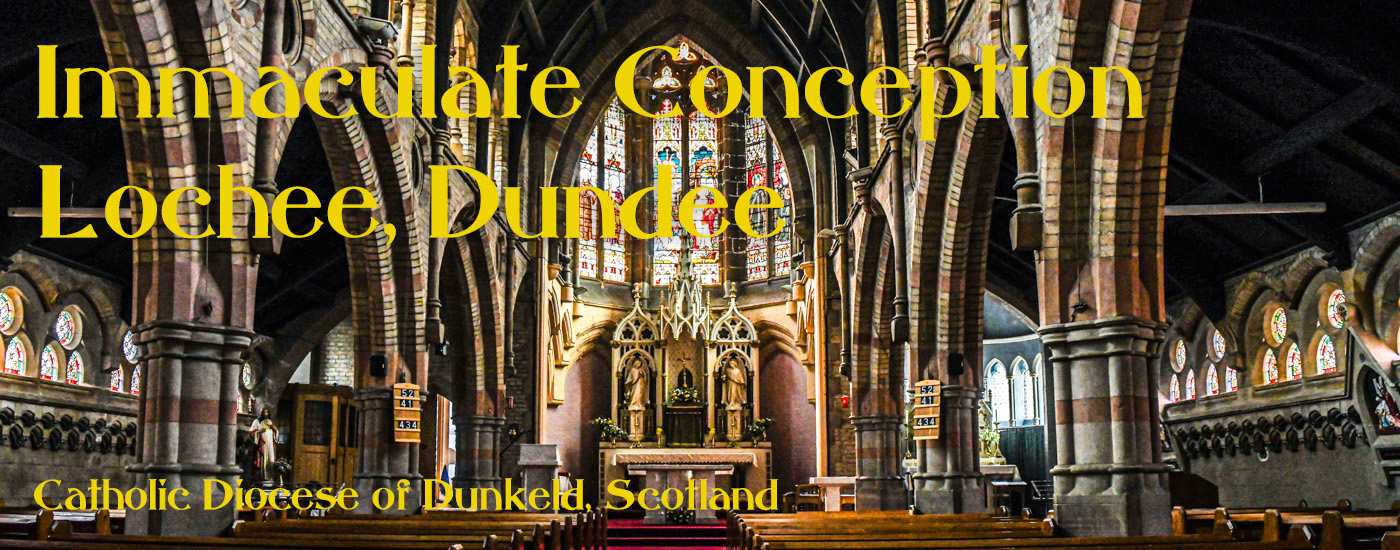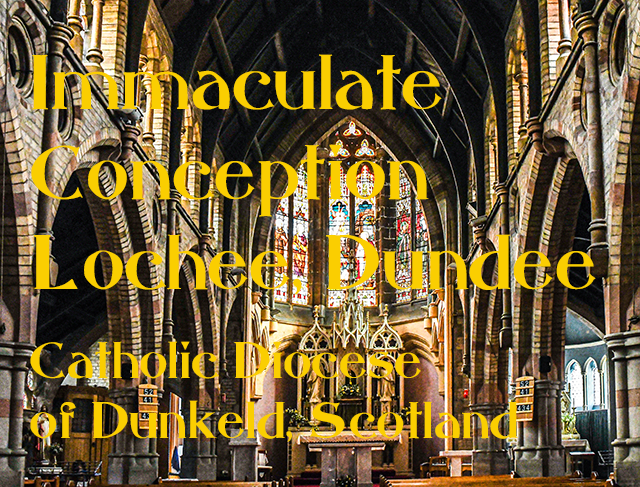This long unusually-designed church is placed on the High street near its junction with Logie street and takes over the upper half of St. Marys Lane. The main entrance is at the north gable, were there is a small car park. This space has pedestrian access from parallel streets.
Dedicated to St Mary it is an example of Gothic revival and was built by Joseph A Hansom in 1866.
Asymmetrical in design, it is rubble built with ashlar dressings. To passers-by the most visible portion is the southern chancel and apse. The five-sided polygonal chancel soars up to a pointed spire and has clasping buttresses at base level only. It also has impressive traceried round arched windows.
The spire slates are of a fish-scale design and there is a wrought-iron finial. The aisle and have walls that are buttressed with the clerestory and aisle windows separated by the steep slate roof. These provide a low roof over the internal aisles. The aisles windows are paired and traceried.
The Impressive entrance on the North gable has an apex with a timber bellcote and several signs of alterations.
The adjoining priest’s house faces the street and is intersected with the church at the northeast corner.
Interior piers are of grey stone with arcades of yellow brick interspersed with red bands. The roof trusses are timber. Other features include a flamboyant 1897 altarpiece by A.B.Wall of Cheltenham and stained glass by Mayer of Munich.
There is also a 12 metre deep well that is floodlit. The church is in full ecclesiastical use.
The Lady Chapel is attached to the west side of the southern apse. It is semi-circular with six-cusped lights on the south face and traceried window facing west.
It is topped by a conical roof.
The entrance, at the North Gable has a central buttress with a niche for a statue. There are 2 hooded windows and above them two infilled quatrefoils. A timber bellcote is placed at its apex. Both doors have been inserted into a set of three former windows. The windows that are not covered by the doors have been restored and infilled with stonework. Glass is in the visible portions of the windows above the doors.
The apse at the north-west corner has the original hood-moulded door, a clasping buttress and consists of only one bay. At the northe-east corner is a semi-octagonal attachment, which has small traceried windows and finial on the faceted roof.
Larry Taylor. with help from Tayside Region.


